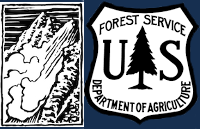In the mountains north of West Yellowstone, facets near the ground produced unstable results during stability tests. This layer was found on a NE facing slope around 9200 ft, but was not found on a SE facing slope nearby. Before commiting to steep avalanche terrain, digging to the ground to assess the strength and distribution of this layer is a good idea. Photo GNFAC
12-13
GNFAC Avalanche Advisory for Wed Dec 26, 2012
Bridger Range Madison Range Gallatin Range
GNFAC Avalanche Forecast for Tue Dec 25, 2012
Madison Range Gallatin Range
Lionhead area near West Yellowstone Cooke City
GNFAC Avalanche Forecast for Mon Dec 24, 2012
Avalanches are all about timing. When conditions are stable, there is nothing wrong with playing in avalanche terrain. If conditions are unstable, playing in avalanche terrain is like gambling - the house has better odds and you'll likely to end up losing.
But what happens when stability is somewhere in between? In this case, some slopes are stable while others are not. Since it may be difficult to figure out which is which, assessing the snowpack carefully and using cautious route finding and conservative decision making is the best way to approach riding in the backcountry.
This pit was dug on a 32 degree southeast facing slope. Facets 33cm off the ground (total depth 85cm) broke clean in stability tests (ECTP 21, 23, Q1). Thin snowpacks are holding weaker snow that avalanched on a couple slopes in the northern Bridgers on Thur and Fri. Photo: GNFAC
Bridger Range, 2012-12-23
This slide occurred on Thursday, Dec 20, and was probable triggered by a falling piece of cornice. Bare slopes on the west side of this peak can be seen telling us snow was blown by the wind and deposited on the slope where this avalanche occurred. Photo Ben Vandenbos
This natural avalanche occured in the northern Bridger Range south of Naya Nuki Bowl. Strong SSW winds heavily loaded some slopes past their breaking point. This slide likey failed on facets near the ground. Photo Ben Vandenbos
Forecast link: GNFAC Avalanche Advisory for Sun Dec 23, 2012
